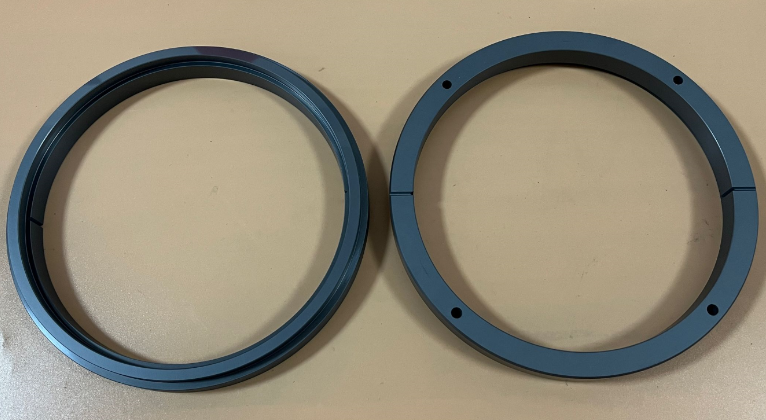
1. Introduction to Silicon Carbide Split Seal Rings
Silicon carbide (SiC) split seal rings are designed to address the challenges of sealing in extreme conditions. The split design allows for easier installation and replacement without dismantling the entire system, while the inherent properties of silicon carbide ensure longevity and robust performance. SiC is a compound of silicon and carbon, known for its exceptional hardness, thermal stability, and resistance to wear and corrosion.
2. Benefits of Silicon Carbide Split Seal Rings
Easy Installation and Maintenance: The split design of these seal rings allows for quick and easy installation and replacement, reducing downtime and labor costs.
Durability: SiC is one of the hardest materials available, providing long-lasting performance and reducing the frequency of replacements.
Thermal Stability: High thermal conductivity and low thermal expansion make SiC suitable for high-temperature applications, ensuring consistent performance.
Wear Resistance: SiC's hardness offers excellent resistance to wear and abrasion, extending the life of the seal.
Corrosion Resistance: SiC is chemically inert, making it resistant to a wide range of chemicals and corrosive environments, ensuring reliability in harsh conditions.
Low Friction: The smooth surface of SiC reduces friction, enhancing the efficiency and lifespan of sealing systems.
3. Applications of Silicon Carbide Split Seal Rings
Chemical Processing: Ideal for pumps, mixers, and compressors in environments where chemical resistance is critical.
Oil and Gas: Used in drilling and extraction operations to ensure reliable sealing in extreme conditions.
Industrial Machinery: Suitable for high-temperature and high-pressure environments, enhancing the durability and performance of machinery.
Power Generation: Utilized in turbines and other power generation equipment where high efficiency and reliability are required.
4. Production Process of Silicon Carbide Split Seal Rings
The production of silicon carbide split seal rings involves several key steps:
Raw Material Preparation: High-purity silicon and carbon sources are selected to ensure the quality and consistency of the final product.
Mixing and Forming: The raw materials are mixed and formed into the desired shape using methods such as pressing or extrusion, with consideration for the split design.
Sintering: The formed parts are heated to high temperatures in a controlled atmosphere to facilitate the bonding of silicon and carbon atoms, creating a dense and hard SiC structure.
Splitting and Machining: After sintering, the SiC parts are carefully split and machined to precise dimensions and surface finishes using diamond tools, as SiC's hardness requires specialized equipment.
Quality Control: The finished seal rings undergo rigorous quality control tests to ensure they meet the required specifications for hardness, density, and surface finish.
Final Inspection and Packaging: Each seal ring is inspected for any defects, then packaged carefully to prevent damage during transportation.
5. Conclusion
Silicon carbide split seal rings offer an innovative solution for sealing in demanding environments, combining the superior properties of silicon carbide with the practical advantages of a split design. Their ease of installation, coupled with their durability, thermal stability, wear resistance, and corrosion resistance, make them an essential component in a wide range of industries. Understanding the production process of SiC split seal rings underscores the precision and expertise required to manufacture these high-performance seals.
By incorporating silicon carbide split seal rings into their systems, industries can achieve greater efficiency, reliability, and longevity, ensuring optimal performance even in the most challenging conditions.
 Shanghai Eheng Precision Technology Co.,LTD
Shanghai Eheng Precision Technology Co.,LTD
